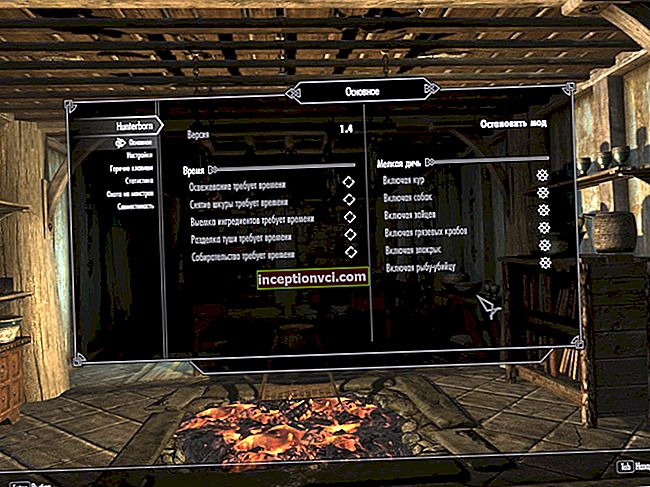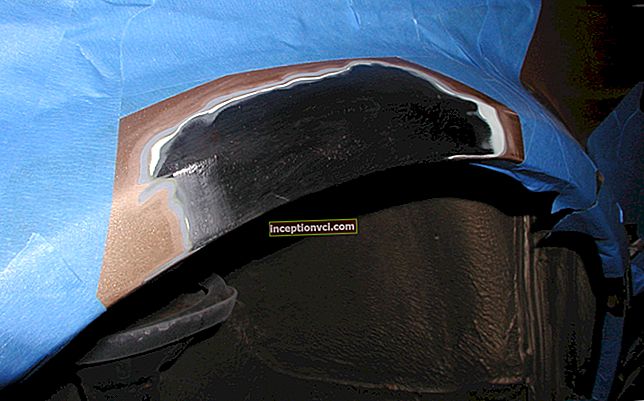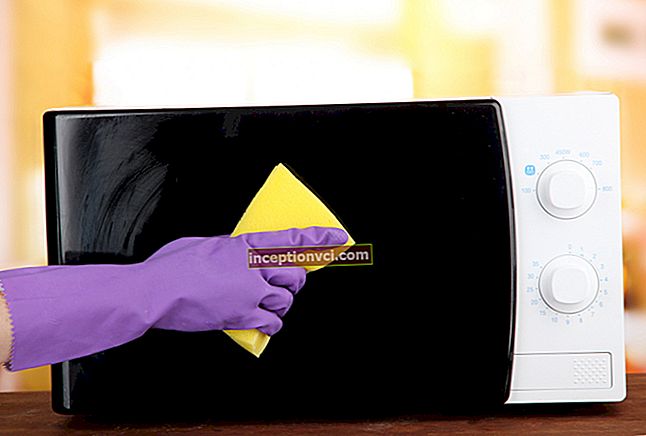Review Lenovo Ideapad Y570 Today I would like to present to your judgment the Lenovo Ideapad Y570 laptop. In the IdeaPad line of the Chinese manufacturer Lenovo, the Y series is considered top-end. Laptops of this series are primarily aimed at users who are very demanding on technical stuffing. The first digit in the model number indicates the diagonal of the display installed in the laptop: 5 is 15 inches, 4 is 14 inches. As the model range needs to be updated, new laptops have a new design. Outwardly, the laptops of this series are similar to the Lenovo Z570 laptops, but the latter, in turn, have a simpler filling, and the quality of materials is lower. Also, the model we tested has a powerful discrete graphics card NVIDIA GF 555M. This card will be awarded to all laptops with a diagonal of 15 inches. Lenovo Ideapad Y570 Line Configuration In this chapter, we will focus only on those advantages of a laptop that the manufacturer himself highlighted, and then we will figure out how right he is. So: The performance and usability notes are: - a body made of metal; - productive filling; - comfortable keyboard; - RapidDrive. Among entertainment and multimedia: - graphics, with the ability to switch from discrete to integrated, and vice versa; - acoustics from the manufacturer JBL; - OneKey Theater; - Intel Wireless Display. Among the ease of management, the manufacturer noted its utilities. It should be noted that the tested laptop has a very good filling, and the main difference from similar competitors is the video adapter. It is also pleasing that there are four USB ports on board. Appearance and ergonomics of the case Lenovo Ideapad Y570 Gradually, Lenovo is starting to find its own style. Compared to past model updates, the design changes are now less noticeable. The case cover is black, has a matte surface and a dotted texture. As we have already begun to get used to, an orange edging runs along the edge. Despite the striking color of the edging and unusual texture, the lid leaves a pleasant impression. With prolonged use, it should not bother you. When opening the laptop, the eye first of all clings to the glossy frame around the display, and to the display itself (matte). The frame itself, in turn, is rather thick, under and above the display about 2 centimeters, and on the sides - 1.5 centimeters. Also, the frame catches all the glare of light, and it very quickly becomes covered with fingerprints. When the display is on, the bezel is less conspicuous, but still looks out of place. At the bottom of the frame is the company logo and laptop model number. The most interesting laptop solution is the keyboard. It has a very interesting shade similar to brass. After working with the laptop, I got the impression that the panel located above the keyboard is made of plastic, while the palm rest is made of metal. As already mentioned, a similar keyboard is installed in the Lenovo Z570, but the entire panel is made of plastic there. The panel design itself is standard: it is made in one color, has simple lines, the keyboard is located in a small depression. Also, the additional keys and speakers do not stand out, but still the design of the laptop is original. It should be noted that the front edge of the laptop is sharp, and when typing under certain conditions, it cuts hands. Expansion Ports Lenovo Ideapad Y570 The back panel, as usual, is empty, since the cover overlaps it when opened. The card reader connector is located on the front panel. This connector is covered by a plastic cap, and each time it must be removed, while there is a high probability of losing it. Also, on the front face, there are two switches. The right switch is in charge of disabling wireless interfaces, although many laptop manufacturers have already abandoned them, entrusting this to software utilities. But still, at some points, it can come in handy. It is not very convenient to use it, since it is tough and small, but it will not accidentally switch. But the left switch is in charge of switching between video cards (discrete and integrated) Nvidia Optimus. The switch can be put either in automatic mode for selecting a video card, or block a discrete video card, while the laptop will work only on an integrated one. On the left side edge are located, in order of approaching the front edge of the laptop: VGA and HDMI video connectors, a network card connector combined with USB eSATA, another USB connector and audio line connectors. Also, as usual, a rather large ventilation grill is located here. On the right side, in the same order: Kensington lock, power connector, Blu-ray optical drive and two USB 3.0 ports. There were no complaints about how the orts are located during testing. Everything is conveniently located, on the left side there are ports, to which thick cables are rarely connected, which can interfere with work if they are located near the mouse. On the right side there are connectors that are used quite often. On the bottom of the laptop there are two holes for access to the insides of the device. The air vents are located above the main RAM fan. Based on this arrangement of ventilation grilles, you should not put the laptop on a soft surface, as this will negatively affect the efficiency of its cooling system. Behind one of the holes (smaller), there is a place for an additional card, for example WiMax. Behind the other (large), there are RAM sticks and a WiFi card. The cooling system is located a little to the right. This model has two heat pipes: one for the video card, the other for the central processor. The tubes are made of copper, and the pads above the chips are made of aluminum. The SSD is located in the lower left corner and the HDD is located in the lower right. Keyboard Lenovo Ideapad Y570 The Lenovo Ideapad Y570 keyboard has a decent array of new features, but not all of them are successful. The keyboard does not have a standard key shape, although it belongs to the island type keyboards. The bottom edge of the keys is made semicircular, although they are usually flat. The side edges of the keys are bent upwards. All this is intended to reduce the number of typos, as the finger should fit comfortably on the key. In fact, the finger often hits the bent part of the key, and unpleasant sensations arise during prolonged use. The keyboard layout isn't perfect either. At the moment, almost all keyboards on 15 inch laptops have a separate numeric keypad. Although disputes over its need are still going on. I believe that it is still needed, since it is convenient to use it as an additional cursor block when editing text and when entering numbers, it is also certainly convenient. However, it is not always possible to place the keyboard with the digital block in the laptop case without any alterations. Lenovo has found a new solution, and it's not the best one. Despite the extra space on the sides of the keyboard, the digital block is located right next to the main one. When typing a test by touch, the gap between the two blocks is the only separation of these parts, but here it is absent. Because of this, you often press a key to the left or right of the required one. Also, the cursor block, located at the same distance from the main and digital blocks, is completely recessed into the main part of the keyboard, so you often press the wrong key. The keys are made the same size as the main ones. The creators tried to solve this problem: there are nodules on the top edge of the keys, but it is very difficult to feel them to the touch. In the middle of the row, a little more than the others, there is the Delete key. Its size does not help to find it in the blind. Above the digital block are the Home / End / PgUp / PgDn keys. This arrangement is also very inconvenient. It is inconvenient to even scroll through the document using these keys, as the hand hangs over the digital block. It is also a common mistake to mix up the "." and "yu" When typing quickly, the keyboard leaves an average impression. This is due to the sufficient stiffness of the keys, and their poor feedback. While the shape of the keys is intended to help with typing, it is more of a hindrance here.The keyboard is also not quiet - it clicks. Moreover, the click produces the very mechanism of the keys. If you look at the keyboard while typing, there are almost no typos, although the shape of the keys does not change from this, and everything also interferes. Additional keys and lights Lenovo Ideapad Y570 On the front edge of the laptop are located forward-facing indicators of the laptop's status. They are round LEDs, and they glow with a light blue light. It is inconvenient to look at them, as they shine forward, although their icons are displayed on the keyboard panel. Next, let's look at the additional keys on the laptop. Let's look at the top row first. On the left is the laptop power on / off key. It is quite large and easy to press. The indicator signaling the operation of the laptop is made point-like, which looks beautiful and original. Just to the right of the power key is the key responsible for the OneKey Recovery 7.0 utility. This utility is designed to back up the system and files to the hard disk, or it can create a disk, or a set of disks intended for system recovery. This utility works in the background, so you may not even notice that it is running. In general, one can argue about the demand for such a button. But this is still up to the manufacturer. To the right are located indicators Num Lock, Caps Lock and an indicator of access to the hard drive. The color of the indicators is matched to the color of the keypad. When working, it feels like the diodes are installed crookedly, and not the entire icon is illuminated. In the upper right part of the keyboard panel there are five touch buttons: two right buttons are responsible for system functions, and the other three are for sound control. Sound control is familiar and convenient. You can turn off the sound, make it quieter and louder. There are eight levels of volume control in total, so control is quick. If you turn off the sound and then press the quieter / louder button, the sound will turn on. If the player is running, then the additional keys still adjust the system sound, which is not provided in all laptops from other manufacturers. One of the remaining buttons is in charge of adjusting the operation of the screen mode: work, video viewing and automatic (one of the previous ones). In video playback mode, the level of brightness and color saturation increases. The other button, in turn, controls the operation of the ventilation system, which has the following modes: "dust collector", "super quiet", "effective heat dissipation" and "standard". How much this key is in demand is also not for me to decide, but I don't see much sense in it. Also, the laptop can be controlled by the usual F1-F12 in combination with Fn. Disabling the webcam is controlled by Esc, the laptop sends F1 to sleep mode, turns off the screen backlight F2, F3 switches the modes of operation with an external monitor. Also, the media player control keys are arranged in the form of combinations, in addition, some keys that did not fit on the laptop keyboard. Touchpad Lenovo Ideapad Y570 The laptop has a large enough touchpad. Even with default settings, it is large enough for comfortable work. There is a separate scroll bar on the right edge of the screen. The touchpad has a rough surface and feedback, but the overall operating experience is average. Two touchpad keys are hidden under the common cover. Keys are pressed only at the edges. The touchpad has a rather standard disadvantage for laptops: when working with the palm, its left side is overlapped. Because of this, there is a high probability of touching it, and the cursor will jump around the screen wherever it wants. Also, it is often pressed, and it is not convenient to type because of the constant jumps in the text. As a result, at the first opportunity, you want to connect an external mouse and disable the touchpad. Lenovo Ideapad Y570 screen Despite the powerful stuffing of the laptop, a regular matrix with a diagonal of 15.6 inches, a maximum resolution of 1366 * 768 pixels, and an aspect ratio of 16: 9 is installed in it. On the plus side, it is worth noting that even small system fonts are well readable, and you can watch low-quality videos from the Internet in full screen. Defects are less visible with larger pixels. Also, in games, you can reduce the resolution and not lose the quality of the picture. Of the minuses - very little information is placed on the display, even for Internet surfing it is no longer enough, not to mention working with documents. This is due to the wide screen, while the pages are oriented vertically. As a result, half of the display is empty in width, and very little fits in height. The margin for adjusting the brightness of the display is sufficient, but nothing more. In a room with bright light, the picture dims, that is, the matrix is no longer enough for films, this is not to mention work in sunlight. For complete darkness, the picture is vice versa - bright, but ideal for low light. Sound Lenovo Ideapad Y570 The JBL acoustics presented in this laptop are found in many expensive Lenovo models. It should be noted that despite the small size of the speakers, the acoustics can offer the user a very good sound. And the Y570 laptop we tested lived up to our expectations. The sound coming from the speakers leaves a good impression. The sound quality and level make it possible to watch a movie and listen to music with a sufficient level of comfort. Of course the bass, for example the sound of an explosion in a movie, sounds rather weak, but in all other respects ... No complaints. Testing Lenovo Ideapad Y570 First of all, it should be noted that the configuration of the presented laptop is very powerful. Next, we will dwell a little on the main points of the hardware configuration of the laptop, which directly affect the test results. The laptop is equipped with the youngest of Intel's quad-core processors - Intel Core i7-2630QM. The processor can simultaneously process up to eight data streams. Processors based on the Sandy Bridge architecture have a very high speed of interaction with memory and caches. Also remember that there are two video adapters. The first one is integrated into the central processor Intel HD Graphics 3000, The second is NVIDIA GeForce GT555M. The discrete graphics card works with GDDR5 memory. This solution should help the video card to reveal its capabilities. Next, we will consider the clock frequency of the processor in various modes, because the performance of the processor mainly depends on it. In idle mode, the processor runs at a reduced frequency of 800 MHz. Under load on the central processor, its frequency can rise even above the specified operating frequency of 2 GHz, which is a merit of Intel Turbo Boost technology. So, first of all, let's see how the laptop transfers the mode of operation at an increased frequency. The tests were carried out in the summer, but not in the hottest. High ambient temperatures will also add work to the cooling system. In rest mode, the temperature of the central processor was equal to 46 degrees. As you might expect, the CPU voltage and frequency are minimal in idle mode. During the stress test, the load is applied to absolutely all components of the laptop. As you can see from the diagram, after just 4 seconds the temperature is on the verge of the safe zone. Because of this, the temperature graph rises very quickly. If you look at it with the graphs of stress tests of other laptops, then the temperature rise there is much slower. This course of events suggests that either the heat exchanger is weak, or the heat exchange with the cooling system leaves much to be desired. Next, let's take a look at the parameters of the CPU. Under these conditions, Intel Turbo Boost Technology begins to drop the frequency from the declared 2.6 GHz to 2.4 GHz. After another three seconds, the temperature approaches the limit values. The frequency continues to jump from 2.4 to 2.6 GHz with a frequency of about once every two seconds. By about the fortieth second of the test, the temperature approaches the danger zone. At 85 degrees Celsius, the temperature rise slows down while the processor is still running at higher frequencies. ... and still remains in the 2.4-2.6 GHz range. The frequency is reset to the standard 2 GHz in about a minute. It is quite expected that in this mode of operation, the temperature of the central processor drops below the dangerous 80 degrees. The following conclusions can be drawn from this test: the cooling system works well and copes with the tasks assigned to it in the standard mode of laptop operation, but it has almost no stock. Resetting the frequency also resets the CPU voltage to default. Further, nothing interesting happens to our attention. After 10 minutes of the test, the system works, albeit with slightly overestimated, but still stable indicators of 81 degrees Celsius. After 15 minutes, we turn off the load test, since nothing happens. When the test is off, the temperature drops to the nominal values. As you can see from the graph, the temperature goes down as fast as up. So, in hot summer weather, the cooling system works well, but only at the standard frequency. In the mode of increased frequency, the laptop can work for a very short time. Although I have a feeling that in winter, the processor in Turbo Boost mode will not last long. Although if you look at this, a lot of laptops equipped with Intel processors with support for Turbo Boost technology behave in a similar way. Although during the tests there was one laptop that could work stably at an increased frequency - this is the Hewlett-Packard DV7. And therefore, in tests, we will compare our laptop with it to see an increase in performance. Heat and noise Lenovo Ideapad Y570 The Everest stress test can be used to determine how hot the laptop components are. The heating of the case is measured with a multimeter, and the heating of the inner filling using sensors in the Everest program. The test is carried out according to the following method: first, the laptop turns on and runs for 40 minutes without load, after which the temperature of the laptop case and filling is measured. This is the laptop temperature at minimum load. After that, the test is turned on for 45 minutes, after which the temperature of the case and the filling of the laptop is measured again. The case temperature is not very accurate, as different environmental conditions introduce an error. For example, in summer, laptops are warmer, and in winter, on the contrary, they are weaker. The ambient temperature must be specified separately. The following table provides data on the heating of internal components. If core temperatures differ significantly from the processor temperature as a whole, they are given in parentheses. At rest Under load CPU 51 ° C 82 ° C HDD 44 ° C 49 ° C It can be seen from the graphs that even for this season, the temperature values are high. The heating of the hard drive can be attributed to the high limit. A temperature of 50 degrees is critical in the normal range. The table below shows the heating values for the laptop case. Stand left Right stand Touchpad Bottom (max) Bottom (min) Exhaust At rest 30-31 ° C 29-30 ° C 31 ° C 33 ° C 24 ° C 40 ° C Under load 30 ° C 30 ° C 31 ° C 37 ° C 29 ° C 50 ° C The body feels warm, but it is quite comfortable to work with. But at the bottom of the laptop there are areas with a temperature of 37 degrees, which is quite a lot. Cold air is escaping from the vents, indicating poor performance of the heat dissipation system. The laptop is also not ideal in terms of noise level. Under load, the fan emits a very unpleasant, rather loud whistle, and it is precisely the whistle, as if the turbine was buzzing. This sound is annoying. Also, the fan often changes its speed. Even if you get used to the monotonous noise, you are still distracted by the sound change. The ventilation system has four modes of operation. The first is standard. The second is super quiet, in this mode the laptop heats up more, but the fan runs at minimum speed. The third is the efficient heat dissipation mode, in which the fan runs at maximum speed initially.The fourth - it is not clear why, invented, the dust collector mode, in which the fan also runs at maximum speed. In the end, it looks like a vacuum cleaner ... Testing in synthetic packages Lenovo Ideapad Y570 First of all, let's consider the performance of the system when testing in synthetic tests. Their disadvantage is that, at the current stage, synthetic tests provide little information about the real performance of the platform. The maximum that they can give is the approximate place of the presented system, when compared with other systems, but again there is one thing: we can see which system is faster, but how much faster - tests will not give an answer to this question. For comparison, we will use Hewlett Packard DV7. This laptop is based on the same Core i7-2360QM processor as our laptop, and at the same time is equipped with a powerful ATI 6570 graphics card. First, let's look at the results of the simplest test - this is the Windows 7 operating system rating. You can compare the results instantly. Lenovo Y570 HP DV7 CPU 7,4 7,4 RAM 7,5 7,4 Graphics 5,6 6,9 Graphics for games 6,1 6,9 HDD 5,9 5,9 From the presented graph we can see that most of the results are the same, and the video card in DV7 is much better. Cinebench benchmark. This test is produced by MAXON, a company that develops 3D control packages, that is, this test is an adapted version of a real engine. We will be using two versions of Cinebench, the old R10 and the new 11.5. Cinebench R10 renders three scenes. From the results, we get an estimate of the performance of the entire processor and one processor core, as well as the graphics performance in OpenGL. The Cinebench 11.5 suite contains just two benchmarks, the first measuring the performance of the CPU and the second measuring the graphics performance in OpenGL. Cinebench 10.0 Cinebench 11.5 1 CPU All CPU Opengl Opengl Cpu Lenovo Y570 4856 16196 5514 9,67 4,71 HP DV7 4567 17284 7823 40,96 4,83 In processor tests, the differences are minimal, which can be explained by measurement errors. In graphics tests using OpenGL, DV7 is much better. PCMarkVantage, version 1.02.This test has one very important feature - sometimes it produces very interesting results, which are very difficult to explain. Therefore, we present the test results for informational purposes only. Lenovo Y570 HP DV7 PCMark Score 7481 (7855) 7304 Memories score 4256 (4738) 5056 TV and Movies Score 5468 (4047) 5373 Gaming Score 4956 (6506) 7181 Music score 6858 (6740) 6841 Communications Score 6761 (6697) 6288 Productivity Score 6617 (6693) 6750 HDD Score 3662 (3689) 3784 As we have already mentioned, PCMark does not give a completely logical result. He thinks Lenovo's laptop is faster than the DV7. And this is despite a strong loss in the gaming test, and a small gain in the Communication Score. Next, let's consider the performance of systems in real tests. Archiving Lenovo Ideapad Y570 In this test, we measure the speed of archiving files using WinRAR and 7z archivers. The speed of unpacking a password-encrypted archive using WinRAR is also measured. This test is, first of all, demanding on the speed of memory and processor. Lenovo Y570 Lenovo Y570 2 HP DV7 HP DV7 (desktop) 7z 1:24 1:31 1:27 1:38 WinRAR 1:25 1:25 1:25 1:26 Unpacking 0:42 0:43 0:41 0:42 Despite our expectations, the results of these tests are almost the same, and the Y570 performed better on the first try with the 7z. Although on the second test I fell behind my result. It should be noted that there is a wide scatter of the results in 7z; we have not yet found an explanation for this. Lenovo Ideapad Y570 Browser Performance Two benchmarks are used to evaluate browser performance: SunSpider and Google V8. Both tests measure the speed of Javascript. This component of browsers is the most demanding on system performance. The SunSpider test cannot get data on the Google Chrome browser due to an error. In the Google V8 test, the results are given in points. Google v8 Lenovo Y570 Lenovo Y570 2 HP DV7 HP DV7 (desktop) Chrome 7368 n / a 7366 4908 Firefox 653 n / a 654 655 Internet Explorer 149 n / a 147 149 Opera 4678 n / a 4552 4561 Safari 3081 n / a 3103 3096 Sunspider benchmark results are reported in milliseconds, so the best result is less. SunSpider Lenovo Y570 Lenovo Y570 2 HP DV7 HP DV7 (desktop) Firefox 628 628 646 648 Internet Explorer 4157 4292 4087 4094 Opera 280 287 275 273 Safari 352 365 354 353 Viewing High Definition Videos Lenovo Ideapad Y570 As a result of this test, we get how well the laptop plays back FullHD 1080P video encoded in H.264 in the Media Player Classic Home Cinema. The video is played in software mode, image processing is controlled by the CPU, and with the inclusion of hardware acceleration. The test measures the load on the processor in both cases. Lenovo Y570 Lenovo Y570 2 HP DV7 HP DV7 (desktop) Hardware 2,4 1,9 1,2 5,5 Software 13,5 14,5 14 14,4 In program mode, the scatter of results is minimal. On the second test, Lenovo again performed worse than the first. Perhaps this is due to the measurement error. Bottom line: Any video decoding for this processor is not a problem. Working with photos Lenovo Ideapad Y570 The tests are carried out in two test suites: Adobe Photoshop and ACDSee. The first measures the time taken to process photos: image rotation, resizing, blur, etc. In the second case, the time required to convert a certain number of photos from RAW to JPEG is measured. The table shows the elapsed time. Lenovo Y570 Lenovo Y570 2 HP DV7 HP DV7 (desktop) ACDSee 5:07 6:16 4:52 4:57 Photoshop 0:49 0:49 0:51 n / a As before, the difference in the two ACDSee tests on the Lenovo Y570 is very large. In addition, in both cases the lag behind DV7 is very large, and there is no change in the final result. In the Photoshop test, both laptops invested in a minute, the differences between the results are minimal. The Lenovo Y570 is even slightly faster. Lenovo Ideapad Y570 Audio Encoding When testing audio encoding, we measure the time it takes to encode audio from one format to another. DBPowerAmp is used for encoding. As a result, we get points depending on the time spent. The best result is with the highest score. Lenovo Y570 Lenovo Y570 2 HP DV7 HP DV7 (desktop) Apple 243 216 238 206 Flac 338 298 343 289 Monkey audio 240 210 235 204 MP3 160 131 152 131 Nero 146 119 142 121 OGG 103 84 90 85 The difference in the results of both laptops is small, but it is worth noting that Lenovo was faster the first time, and the second time the DV7 was faster. Lenovo Ideapad Y570 Video Encoding This test measures the time taken by a laptop to encode a test video using DivX, XviD, x.264 formats. Lenovo Y570 Lenovo Y570 2 HP DV7 HP DV7 (desktop) DivX 3:47 4:42 4:18 4:32 x264 6:49 7:44 7:35 7:41 XviD 2:15 2:50 2:30 2:18 In the first test, the Lenovo Y570 turns out to be quite faster than the HP DV7 in all tests. On the second launch, Lenovo is slightly slower than its opponent on all counts. Making a video Lenovo Ideapad Y570 In this test, we simulate a full-fledged work of creating a video in a video editor. The test includes editing, effects and final rendering. There are two packages in use: Premiere and Sony Vegas. The table shows the time taken to complete this operation. Lenovo Y570 Lenovo Y570 2 HP DV7 HP DV7 (desktop) Premiere 3:13 3:45 3:35 3:52 Vegas 5:34 n / a 6:28 6:03 Lenovo Ideapad Y570 Professional Apps Here, tests are conducted in completely different applications used in professional activities. Here we can see the emulation of work in the MATLAB calculation package, the speed of execution of applications in the Java language and the compilation of the project in MS Visual Studio 2008. Lenovo Y570 Lenovo Y570 2 HP DV7 HP DV7 (desktop) Compile 4:41 5:12 4:54 5:22 MATLAB 0,0361 0,036 0,0365 0,0368 Java 121,47 109,36 105,45 103,93 Lenovo Ideapad Y570 Professional 3D Graphics Here we see the results of the laptop in professional applications designed for three-dimensional modeling. We can see the results for three packages: LightWave, SolidWorks and 3Ds MAX. For each package, the test went through two parts: final rendering and work emulation. For the 3Ds MAX package, the result of only the final rendering of the scene is presented, since when emulating the work, the laptop hung immediately after launch. Lenovo Y570 Lenovo Y570 2 HP DV7 HP DV7 (desktop) 3Ds MAX render 7:11 n / a 7:45 7:14 Lightwave workload 71,43 n / a 16,17 15,29 Lightwave render 84,06 n / a 90,22 82,22 Solidworks CPU 39,72 n / a 38,42 36,6 Solidworks workload 128,48 n / a 60,45 59,02 Lenovo Ideapad Y570 Games In this test we look at the performance of a laptop with multiple games. For the first time, Lenovo Y570 ran on an integrated graphics card. This was the primary reason for his poor performance and second dimension. Lenovo Y570 Lenovo Y570 2 HP DV7 FarCry 2 19 64 67 S.T.A.L.K.E.R. 102,8 226,3 309,6 Resident evil 5 32 81 89 Unreal Tournament 3 37,2 121,6 112,7 DiRT2 21 74 35 Battery life Lenovo Ideapad Y570 Battery life tests were carried out in two modes: without load, and while watching a movie. The first option involves reading text from the screen. During the tests, "balanced" energy saving parameters are set, the monitor shutdown time is set to "never". All other parameters are left by default. Wireless communications are turned off, and the screen brightness is set to maximum. Also, during tests, the laptop is rebooted, and only the default utilities, except for the antivirus, remain running. When testing with a minimum load, only the utility that measures the battery life is launched. In the second test, to view a movie, a movie in avi format is played from the laptop's hard drive. For playback, Media Player Classic with built-in codecs is used. According to the official specifications, the capacity of the large battery is 6264 mW / h. Reading mode Watching a movie 5 h. 30 min. (4 hours 40 minutes) * 4 hours 38 minutes (2 h. 30 min.) ** * With included Wi-Fi adapter ** With included NVIDIA graphics Our laptop leaves a very pleasant impression in terms of battery life. Its five and a half hours of reading time, with a quad-core processor installed in it, is a very good result. In the movie viewing mode, the result is also quite good (four and a half hours).But when using a discrete video adapter, the battery life will be significantly reduced. In general, the laptop is competitive in terms of battery life. Additional Features Lenovo Ideapad Y570 Here I would like to note a function that is quite promising, but it did not work for me. This laptop has a function that can put together a hard drive and a small SSD drive. As I understand it, this function distributes files across disks depending on the frequency of their use. Positioning and output of Lenovo Ideapad Y570 The presented laptop is a device designed for the home. Despite the long battery life, I don't think the laptop will be used on frequent trips due to its size and weight. On vacation, if you are not going to play games, you will not take him either. This laptop is designed to perform tasks of any profile. Moreover, it can also be very demanding applications. His responsibilities also include multimedia tasks. Good built-in acoustics will be a plus. Of the minuses - the usual screen, the capabilities of which will be few demanding users. Of the advantages - ample opportunities for working with peripherals. Also noteworthy is the laptop's beautiful design and ease of use. As for the design, it is classic, pleasant, with original solutions. With ease of use, not everything is so smooth. The disadvantage is the keyboard, which is not very comfortable. But this problem will be noticeable to those who type a lot. As a result, the laptop left a very pleasant experience. With prolonged use, it does not become boring. It is comfortable to work with, there are no obvious ergonomic drawbacks. Minor flaws are present, but they are not critical. As a result - Lenovo Ideapad Y570 is a home laptop with high performance, decent functionality and high quality. Pros Lenovo Ideapad Y570: - Performance configuration - Beautiful design - High functionality - High quality acoustics Cons of Lenovo Ideapad Y570: - Unsuccessful keyboard - Weak cooling system






































